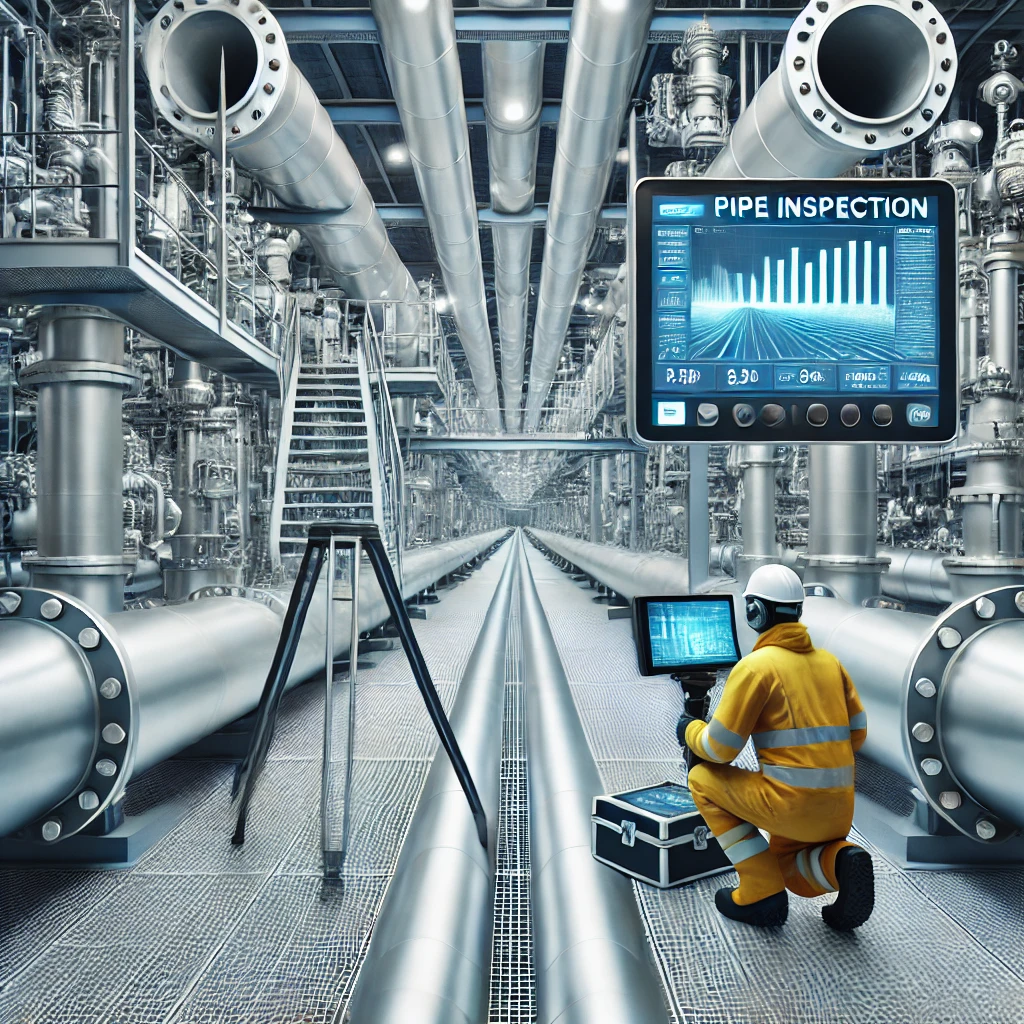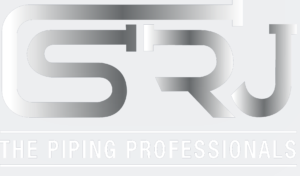Piping QA/QC: Standards and Best Practices
Table of Contents
It is not only about ticking the boxes for quality and safety in industrial piping; it is about how an entire system breathes reliability into every pipe and weld. Understanding the nuts and bolts of quality assurance versus quality control (QA/QC) should be second nature to the project manager. Even slight oversights can translate into big problems as far as pipelines are concerned.
The article is intended to guide users through standards and best practices for QA/QC in the piping industry. It will canvass all you need to do to make your projects come out meeting the highest standards, from understanding the power of the ASME Boiler and Pressure Vessel Code to implementing state-of-the-art testing techniques. Let’s get it right; make sure your pipelines are not just functional but flawless.

Understanding the Importance of QA/QC in Piping
Quality Assurance and Quality Control are the most important building blocks for a piping project. But what are these terminologies, and why are they so vital?
Quality Assurance is the procedure of introducing a system into the piping project, which assures that all work has been executed according to the set standards. It is the proactive side of quality management that induces procedures to prevent defects and ensure uniformity. Quality control is quite different, as it is much more oriented toward inspection and testing, verifying if a finished product meets the specification required by identifying deviations.
Why does this matter? The industrial stake is very high. That small fault in the pipe or weld might be all that makes a difference between a break, a shutdown, or even a complete failure. That is why adherence to quality standards such as the ASME Boiler and Pressure Vessel Code and API American Petroleum Institute guidelines is non-negotiable. Compliance with these code standards enforces piping systems that are not only functional but corrosion-resistant, of strength to match the pressures they will withstand.
Key Standards and Codes in Piping QA/QC
The integrity of piping systems can only be ensured if the already set standards and codes are adhered to. These guidelines ensure that each process in piping, right from the selection of material down to its installation, meets the requirements expected by the industry. Let us now discuss a few key standards and codes related to piping QA/QC.
ASME Boiler
This is probably the best-known standard within the industry. The American Society of Mechanical Engineers developed this code to regulate the design, fabrication, and inspection of boilers and pressure vessels. The ASME Boiler and Pressure standards are followed to ensure piping systems can withstand the high pressures they may be subjected to without having the potential for failure.
API Standards
The American Petroleum Institute sets out a unique set of standards for the oil and gas sector, ranging from pipeline materials to inspection techniques, making sure that all elements are fit for the high demands of the sector. API standards are key to a project that deals with hydrocarbons, where safety has to be extreme.
Pressure Vessel Code
The pressure vessel code deals essentially with the design and quality control of such equipment so that they shall not burst under the high pressures they withstand in industrial applications. That assures that such vessels shall be able to contain fluids at high pressure safely.
Quality Control Procedures
Beyond these codes then, there should be the institution of stringent quality control processes. Such processes involve periodic inspection and testing through destructive and non-destructive techniques to ensure the integrity of the piping systems. It is this assurance that every pipe, weld, and joint is to specification that keeps a project on schedule and safe.
Best Practices for Piping QA/QC
The success of every piping project requires the proper implementation of quality assurance and quality control. This can be made possible by embracing some of the best practices to help in the construction of the finest piping systems. These are hereby explained below:
Comprehensive Planning
A detailed QA/QC plan should be developed before initiation of work. It should identify all quality control processes in terms of inspection points, methods of testing, and documentation requirements. Well-defined plans work almost like a guide that will lead the project from start to finish, assuring that nothing has been left undone.
Material Verification
One of the intrinsic steps in QA/QC processes is to ensure the specifications of the materials used in piping systems. This would involve verification of the chemical composition, mechanical properties, resistance to corrosion, and other specifications of the materials. Proper material verification will avoid problems at a later stage and ensure that the piping system withstands all conditions it is put through.
Post-Weld Inspections
Among the most important processes in piping construction is welding. As such, it becomes crucial to ensure that such welds are of the highest possible quality. The post-weld inspection allows for radiography and ultrasonic non-destructive tests that permit the detection of any defects that would reduce the integrity of a piping system.
Documentation and Record Keeping
It is not just about compliance; detailed record-keeping of all the QA/QC activities provides a point of reference for future projects. Documentation includes material certificates, inspection reports, test results, and others. There is immense value in such information when it comes to troubleshooting any issues that may arise or simply ensuring that everything is as desired regarding quality in the project.
Continuous Training and Improvement
The world of mechanical engineering is changing all the time, and new techniques and technologies find their way through quite frequently. However, periodic training of your team keeps every person abreast of the most updated state-of-the-art piping QA/QC practices available to date. Also, it begets a culture of improvement that fills up the gaps between processes, working for betterment to give the best results for any upcoming project.

The Role of Testing in Piping QA/QC
Testing represents a huge portion of the assurance of quality and safety of piping systems. This is the stage where theory comes to meet real conditions, proving all materials, welds, and components perform to expectation. The next section considers some of the most critical test methods applied in piping QA/QC:
Destructive Testing
The name itself gives away the essence of destructive testing: a sample is taken and strung out to its extreme limits until it fails. This technique informs, therefore, about the strength, durability, and other mechanical properties related to materials used in your piping systems. Although it is a sacrifice of material, the information gained is essential for verifying that the system will hold up under stress.
Non-Destructive Testing (NDT)
Compared to destructive testing, the NDT methods are applied to examine the material or weld without breaking it. The most common techniques or methods applied in the industry are radiographic testing or X-rays, ultrasonic testing, and magnetic particle testing. These techniques are of immense help in detecting hidden or well-concealed flaws such as cracks and voids, which can be disastrous if not checked.
Pressure Testing
Pressure testing is normally done after installation to check the integrity of the systems. It consists of pressurizing the piping systems to their maximum operating pressure. The test is conducted by filling the system with water or some other incompressible fluid and raising the pressure to a higher level than the one it should undergo in normal operation.
Corrosion Testing
Corrosion is probably at the top of the list of reasons for piping failure, mainly due to harsh chemicals or extreme temperatures. The testing evaluates how well the piping material can stand degradation over some time, which would greatly matter for the long-term reliability of the piping system. More specifically, in industries such as oil and gas, where corrosion can turn out to be a serious threat, this may become necessary.
PWHT: Post-Weld Heat Treatment
Although not a testing method in itself, the process of post-weld heat treatment is conducted many times as part of QA/QC. This relieves the stresses induced by welding, therefore reducing the chance of cracks and increasing toughness in general. It is a very important step toward ensuring that welded joints are as strong as the materials to which they are connected.
Let’s Conclude
Every pipe, every weld, and every joint has to pass rigorous standards so that your projects are safe and stand the test of time. For this reason, a good quality assurance/quality control (QA/QC) program is not simply window dressing but forms the backbone for successful industrial operations.
Following the quality control procedures and availing yourself of state-of-the-art techniques, you will have the assurance that your projects measure up to industry standards of quality and set a benchmark of excellence.
In the final analysis, success with regards to piping systems isn’t defined by whether they work, but by the length of time, safety, and quality measures. With an effective industrial piping expert in place, you can be sure that your projects stand up to time; because when it comes to piping, second best is not good enough.
World-class piping QA/QC standards separate safe, efficient operations from catastrophic failures waiting to happen. The ASME B31.3 Process Piping Code mandates 11 critical checkpoints during fabrication – a protocol we’ve refined through our ISO 9001-certified Inspection Services. When audit failures at a Gujarat refinery triggered ₹92 crore in penalties (documented in this PNG Study on Piping Failures), it validated our 5-Layer Defense System combining material verification, NDT testing, and staged pressure approvals. In India’s high-corrosion environments, these aren’t just best practices – they’re the bulletproof vest for your operational integrity.
Need Help with Piping QA/QC Compliance?
SRJ Piping India ensures end-to-end QA/QC standards for industrial piping—covering documentation, inspection, and certification.
